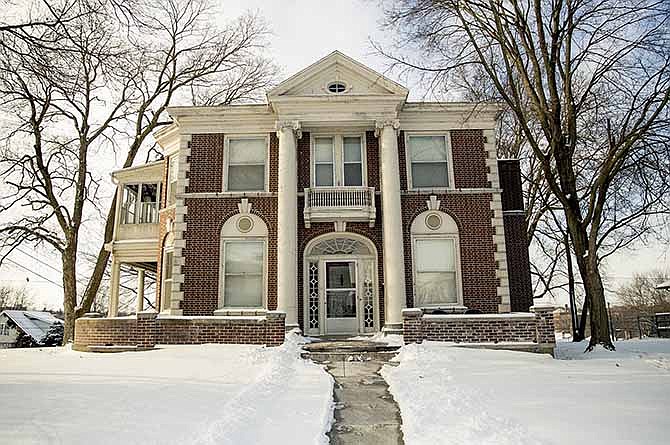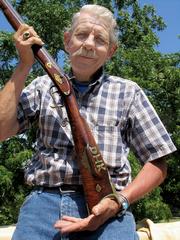The Jefferson City intersection of Lafayette Street and Capitol Avenue sits in the heart of the community's future.
To the immediate northeast are the Missouri State Penitentiary walls, and due north is the new federal courthouse.
Anchoring the entrance to the proposed redevelopment site are two historic city Landmarks. The Marmaduke House, or Warden's House, stands on the southeast corner.
The lesser-known house on the southwest corner reflects the affluence of its first owner, Lester Shepherd Parker, who made his fortune in the shoe business using inmate labor.
"Lester S. Parker was a fascinating man," said local historian/author Bob Priddy. "He was an entrepreneur, a poet, an author, a composer, a performer in local performances, an advisory committee member both for the Capitol Commission Board that oversaw the construction of the building and for the Capitol Decoration Commission.
"Late in his life he became an accomplished painter and some of his works showing the Capitol are striking."
Parker was the state's first superintendent of prison-based industry. But he may better be remembered in the community for his artistic works and his service through First Baptist Church.
Parker was first introduced to the shoe business because that was his father's line of work in Chicago.
The 1900 Illustrated Sketch Book and Directory of Jefferson City and Cole County says Parker's family lived next door to the famous Mrs. O'Leary, losing their home in the 1871 Chicago fire.
Parker brought the Jefferson Shoe Company to Jefferson City in 1895 on behalf of the Chicago-based C.M. Henderson and Company. A year after serving as superintendent and general manager there, his employer died.
"A combination of cheap labor, low taxes and rental rates, and competitive freight rates added up to an attractive package and a highly successful operation," the nomination said. "From the state's perspective, this use of the penitentiary was primarily a means of making it a more self-supporting institution."
Recognizing a good business venture, Parker stayed in Jefferson City forming the L.S. Parker Shoe Company. Within a decade, his company employed 230 people.
And by age 53, he had retired.
Eight years earlier, in 1905, his neo-classical revival home had been built. The L.S. Parker Shoe Company's original building inside the penitentiary walls burned during the 1954 prison riots.
"Many of the wealthiest, most powerful, and socially elite residents of the Capital City lived within a few blocks of the penitentiary during the first quarter of the 20th century," said local historian/author Gary Kremer.
He did not remain in retirement long, as two years later Gov. Elliott Major appointed him as the state's first superintendent of industries for the prison, since the state had taken control of factory operations inside the prison.
"According to Parker's friend Hugh Stephens: "His master stroke was the organization of the intricate system of industries within the state prison. Here he turned a liability into an asset and performed a great service to his state,'" the nomination said.
Then in 1917, Gov. Frederick Gardner appointed him to the Capitol Decoration Commission.
He later was credited as being an invaluable force to see the commission's task progress.
In 1924 at his own expense, Parker published "State Capitol of Missouri, with a description of its construction, museum, art features, mural paintings, sculptures, art windows and decorations."
He died unexpectedly in 1925.
"He was a Renaissance man," Kremer said.
Parker's own artistic interests often centered around painting scenes from his travels abroad, as well as authoring songs, plays and poems.
His song "Come Back My Honey to Missouri" was considered for the official state song.
In 2010, the Missouri State Historical Society shared its collection of Parker paintings in an exhibit at the Rozier Gallery.
In addition to his paintings, his grand home at 624 Capitol Ave. remains.
The brick building was listed on the National Register of Historic Places in 2000. Twin bay windows and two two-story pavilions give this home distinction.
The site also includes an original second two-story brick dwelling and a root cellar.
Parker's third wife, Missouri "Zue" Gordon Parker, who was the first woman elected to the Jefferson City Board of Education, continued to live there with their daughter Rachel until they were killed in a 1931 car accident.
The home then was divided into apartments.



